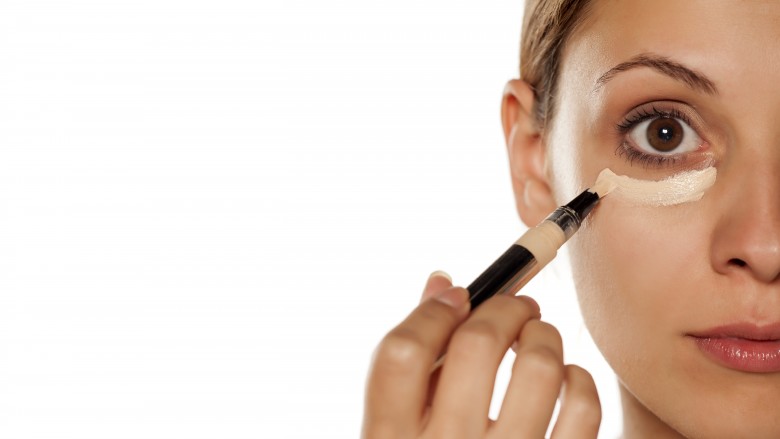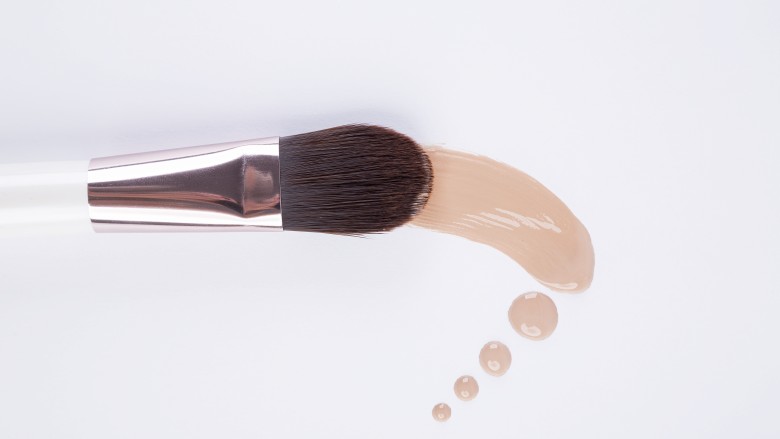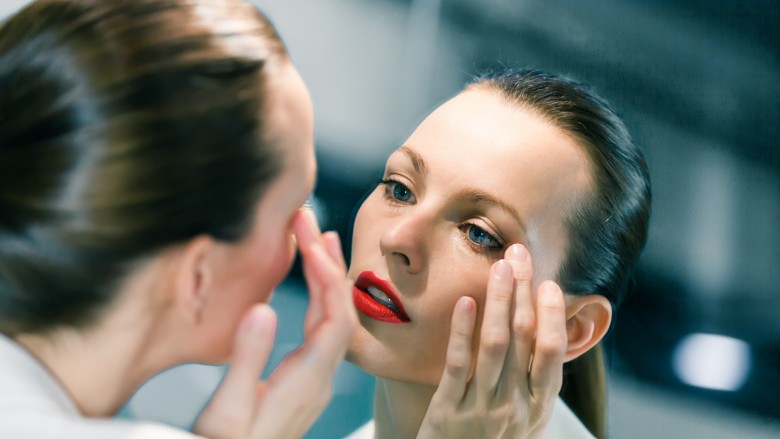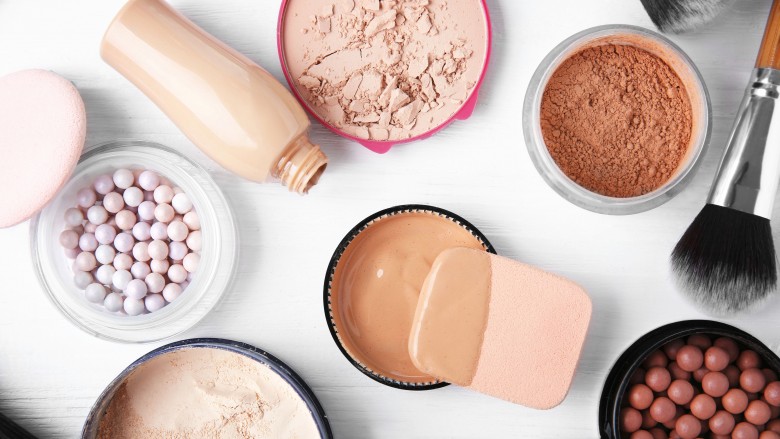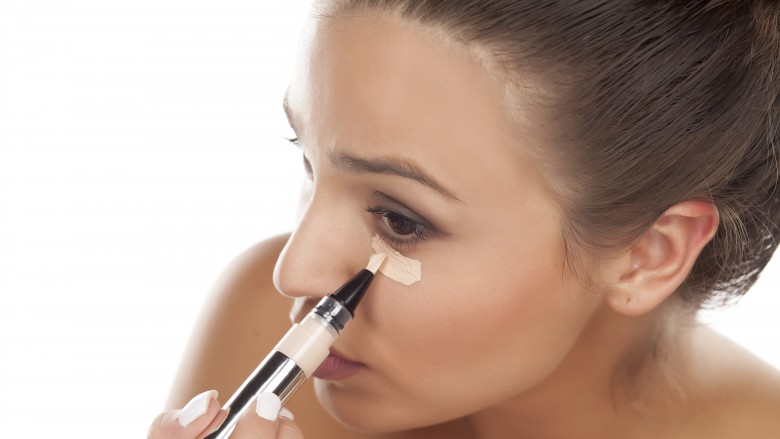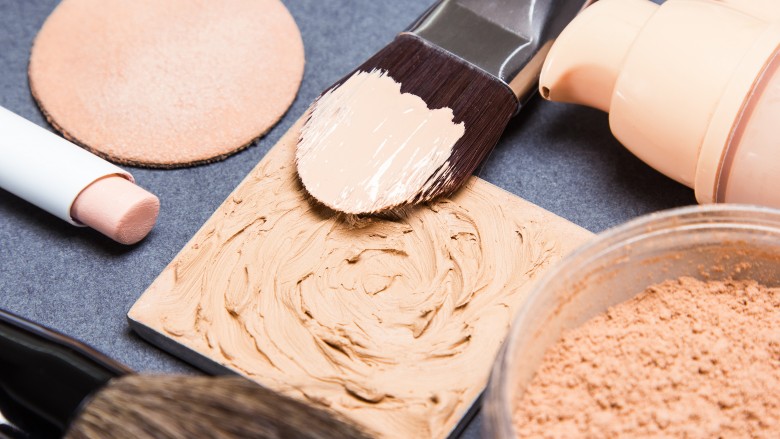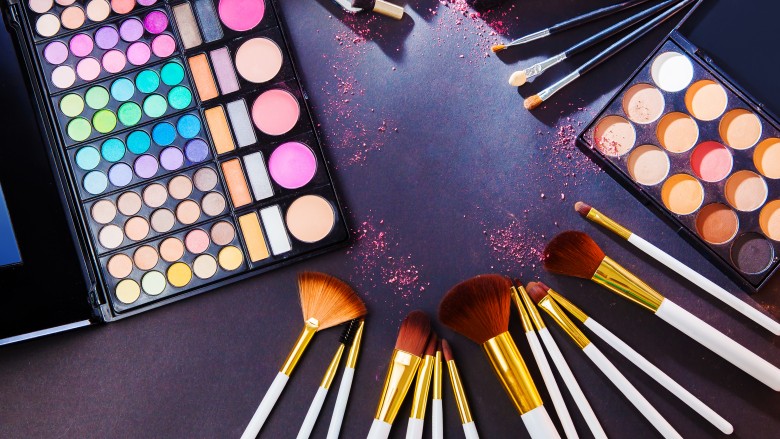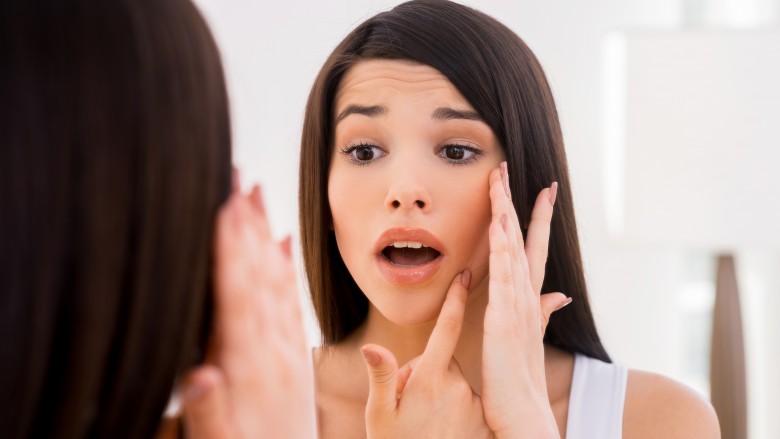False Facts About Makeup Most Of Us Believe
If you've ever fallen down the rabbit hole of YouTube makeup videos, no one has to tell you about the wealth of beauty tips that live online. From how to get Adele's signature cat eye to where to find the best lipsticks for winter, there's a beauty enthusiast around every corner these days, eagerly awaiting to share their advice. And while plenty of them are talented artists in their own right, it's also easy to come across bad beauty advice that seems accurate enough. That's why we enlisted the help of a few experts to help us separate makeup facts from makeup fiction.
Here are 10 makeup myths we can all stop believing, right now.
Always conceal your eyes first
Concealer can be our BFF when we want to cover under-eye circles brought on from a bad night's sleep. If you're anything like me, who lives with lovely dark circles each and every allergy season, slathering concealer around your eyes is often the first priority.
"You will hear many people say to conceal your eyes first then finish the rest of the face," Michelle Quaranta, go-to celebrity makeup artist for Bravo and E!, told The List. "I save time and find it much more effective to do your eye makeup first, leaving under-eye clean. Then apply your foundation and finish the look by concealing the eyes last." This method, Quaranta explains, allows you to clean up anything that has fallen underneath your eyes that might otherwise cast a shadow, making dark circles look even darker.
Dark eyebrows work for everyone
I'll be the first to admit that I'm kind of obsessed with eyebrows, especially really pronounced ones. Yes, stars like Cara Delevigne and Lilly Collins give me major eyebrow envy — so much so, that I've experimented with recreating this look myself. The result wasn't nearly as glamorous. That's because, according to Quaranta, far too many of us draw in our eyebrows, forcing a shape that's not natural to our face. "Enhance your natural shape and fill in to give depth or add color," she said. "But do not take away from the rest of your beautiful features." The bottom line: what works for Lilly Collins might not work for all of us, and that's OK.
A foundation brush is a must-have beauty tool
Many makeup experts swear by foundation brushes. In fact, peruse the makeup counter at any fancy department store, and I bet it won't be long before the sales clerk insists on your purchasing a very specific foundation brush to go with your new liquid makeup. The truth is, there are many effective tools you can use to apply your daily foundation. "On myself, I love the beauty blender or a fluffy brush," Quaranta said. "On set I find that to be the same for beautiful flawless/airbrushed looking skin."
Whatever tools you choose, just make sure to clean them regularly. "Brushes and beauty blenders will create a picture-perfect finish for all of your products, but if you don't clean them regularly, they can also brush on pore-clogging skin oils, bacteria and yeast each time you use them," Beverly Hills dermatologist Tsippora Shainhouse, MD, FAAD, told The List. In order to keep germs at bay, Dr. Shainhouse suggests using a spray-on brush cleaner every few uses. "Also consider washing your tools in some warm water and gentle shampoo once a week," she said.
Never apply makeup with your fingers
Have you ever gone on a trip only to realize that you forgot to pack your makeup brushes? Panic no more. As it turns out, your fingers can be as good as any beauty tool out there. "Many people are afraid to touch their face with their hands when applying makeup in fear of spreading germs," Dr. Shainhouse said. But your fingers can actually be great for applying liquid foundation and cream blushes. "The warmth that they supply helps blend the pigment into the skin most naturally," she explained. "Just make sure that your hands are clean before you start and try not to double-dip into any potted or cushioned products."
Order doesn't matter
From foundation to moisturizer, primer to concealer, there are so many products made to make our faces look beautiful. But what should we put on first? Or, does it even matter as long as it all ultimately ends up on our face? Dr. Shainhouse says it definitely does matter. "When layering beauty products, the general theory is to put active ingredients closest to the skin, and layer from lightest to heaviest," she explained. "If you wear acne medication or use an anti-aging serum, apply this first. Then apply a lightweight moisturizer." Primer can be layered next to seal in the moisture, followed by sunscreen and then makeup, if you choose to wear it.
Concealer should always be lighter than your skin
Lighter isn't always better when it comes to concealer. According to anti-aging expert Sharrona Katz-Moulay, who serves as the head esthetician at Aesthetics by Norden in Ridgewood, New Jersey, there are a few things we should all consider when it comes to choosing concealer tints. "Green neutralizes and masks red lesions, while yellow will camouflage dark circles and bruises," Katz-Moulay told us. "Mauve helps neutralize yellowish blemishes and sallow skin, and a white pearled base helps minimize wrinkles."
My makeup has SPF so I don't need sunscreen
Who doesn't love a good tinted moisturizer? Add in a bit of SPF and you really don't need anything else, right? Unfortunately, not quite.
"One should use a moisturizer that specifically targets her condition," Katz-Moulay said. "SPF should be applied separately as needed throughout the day and the same goes for the foundation/tint."
Skincare expert Rianna Loving, who founded the line of beauty products Organic to Green, agrees. "Just because your makeup has some sun protection in it does not mean you are fully protected from harmful UVA and UVB rays," she told The List. "You need to consider the length of time you will be exposed to the sun too. Remember, even the strongest and best sunscreen products warn that they need to be reapplied frequently."
Expensive makeup reigns supreme
If your heart says Sephora but your wallet says Duane Reade, we've got some good news for you. Higher price doesn't always mean higher quality when it comes to our makeup. In fact, much of today's makeup contains similar ingredients. "Expensive brands are not safer in terms of ingredients than cheaper over-the-counter brands," Katz-Moulay said.
The FDA doesn't regulate cosmetics in the U.S. and many brands continue to use controversial ingredients that have been deemed unsafe by numerous organizations.
So Katz-Moulay says its important to read labels, regardless of where we're shopping. "As a basic rule, less ingredients is better than a long list of ingredients," she said. She also suggests avoiding things like fragrances, parabens, talc, formaldehyde (mostly in eye shadow) and D&C, which stands for artificial colors that come from coal, tar and petroleum. "Skin Deep and Think Dirty are two great ways to check products for health rating."
Makeup is bad for your skin
It's easy to blame makeup for anything that goes wrong with our skin. But it turns out, our favorite foundation may not be to blame for those annoying blackheads. "Makeup is not bad for the skin," Dr. Elizabeth Tanzi, founder and director of Capital Laser & Skin Care and Assistant Clinical Professor of Dermatology at George Washington University, told The List." In fact, most offer some sun protection and are non-comedogenic, which means they won't clog pores." Just make sure that you're giving your face a good wash every day (and maintaining those makeup brushes clean).
Makeup doesn't expire
Nothing lasts forever, including makeup. "These products are tested to last for a certain period of time, but after that, the ingredients can break down," Dr. Tanzi said. "They won't hurt you, but they may not be as effective."
So when should you dump that old lipstick? Dr. Tanzi says six months after the expiration date is when it's time to throw it out.


